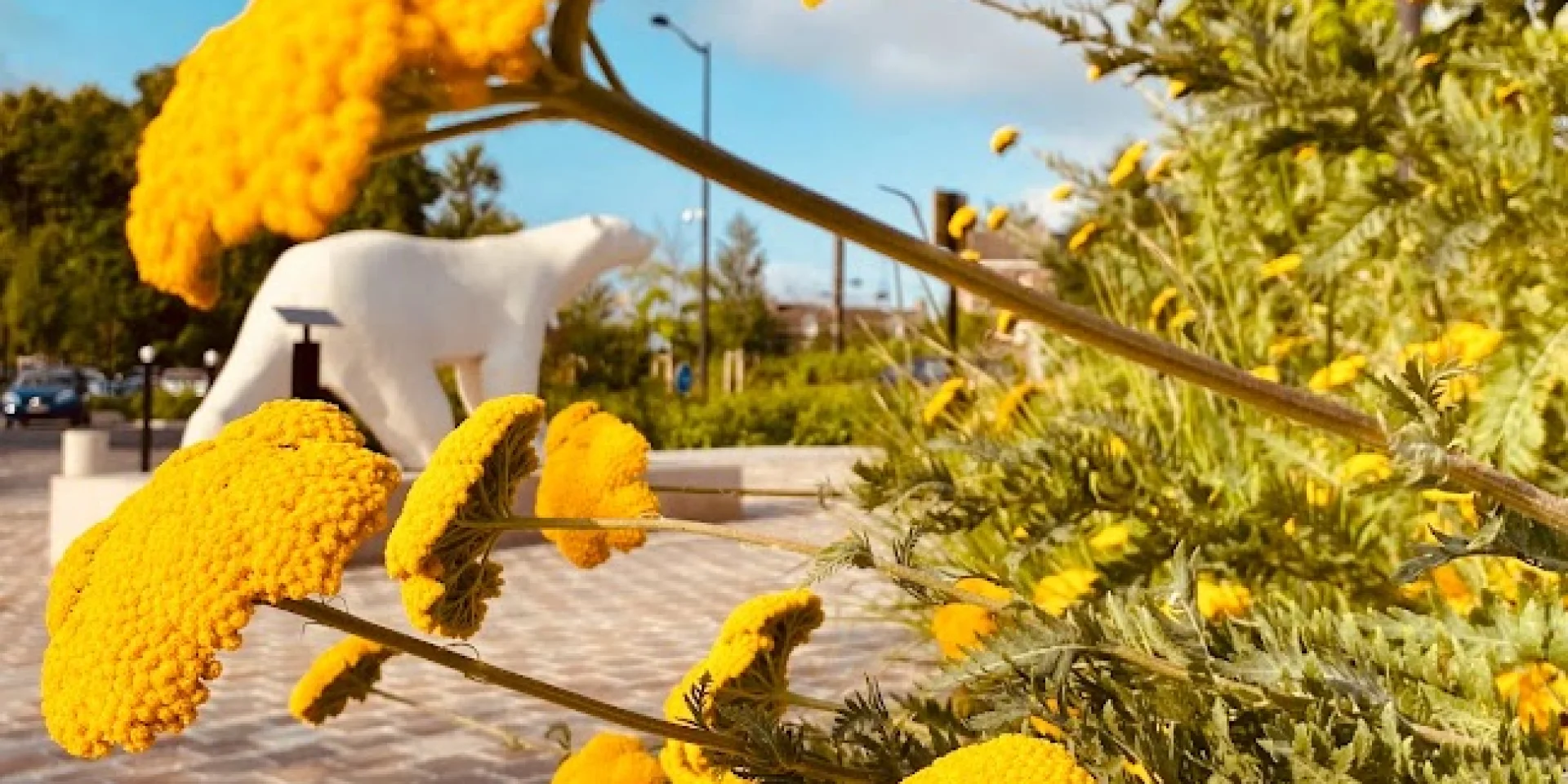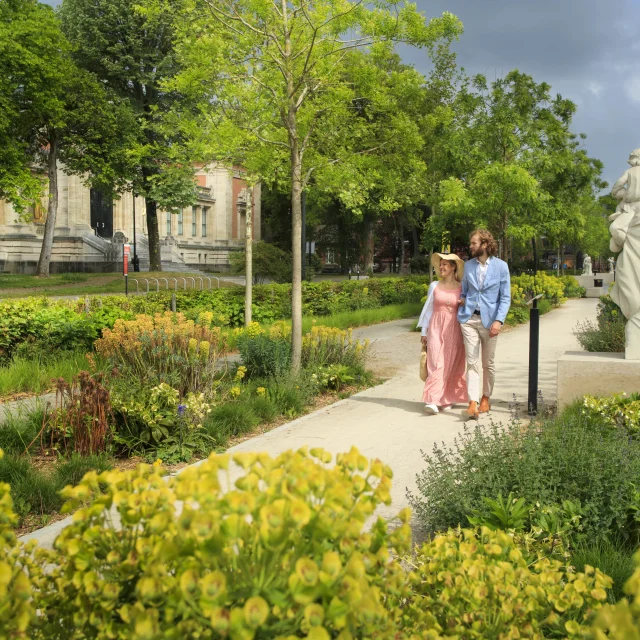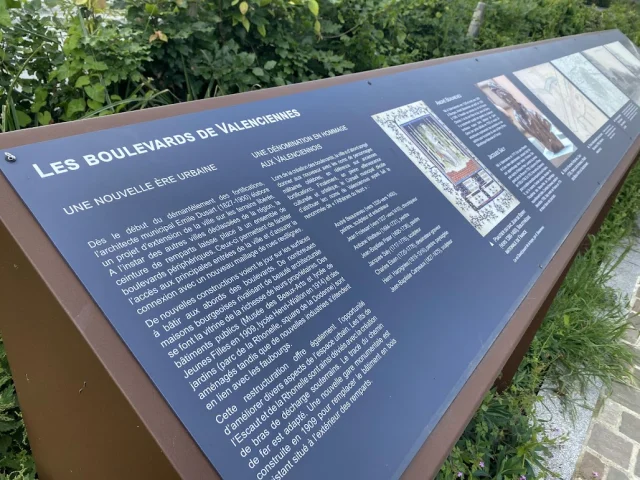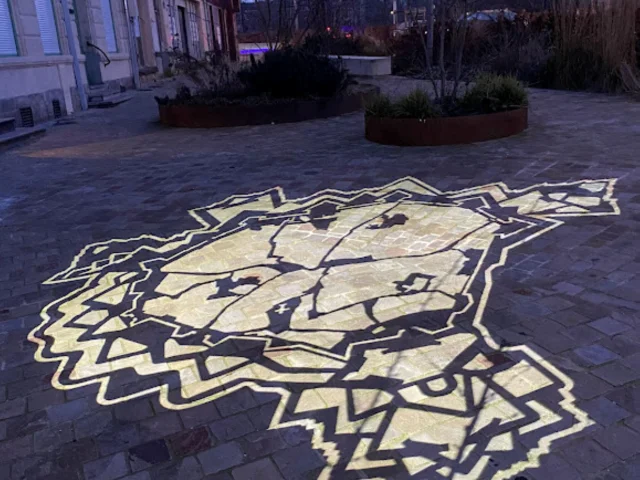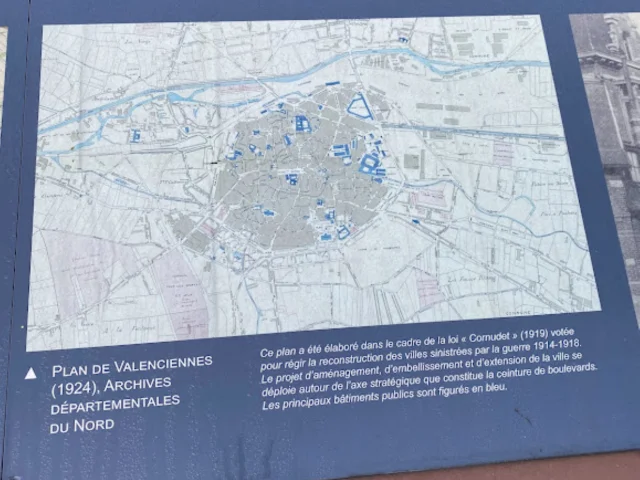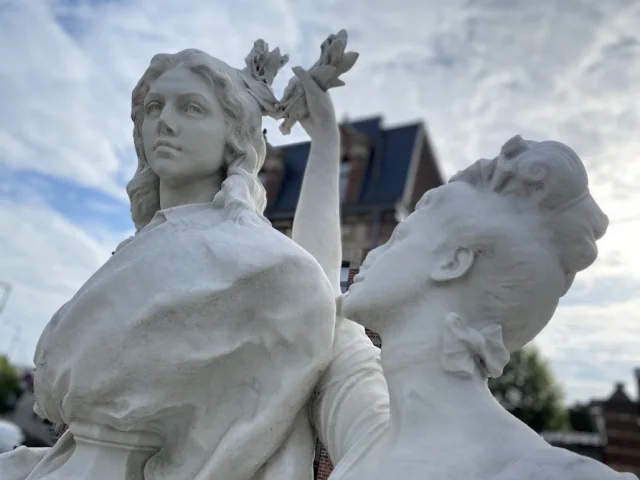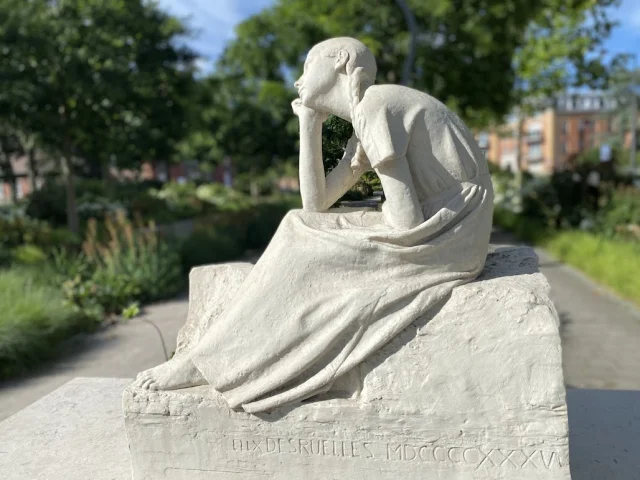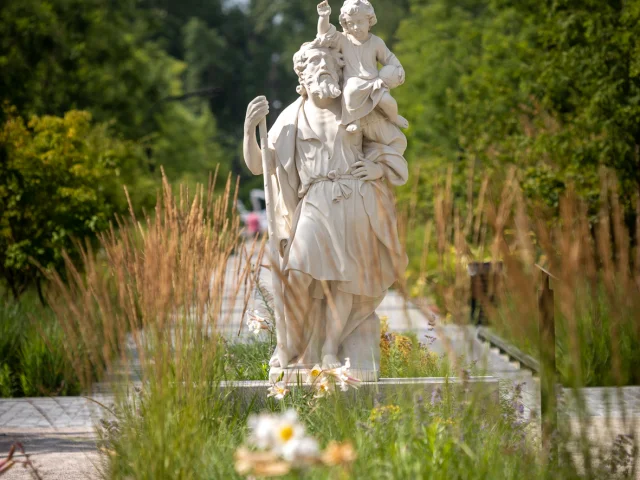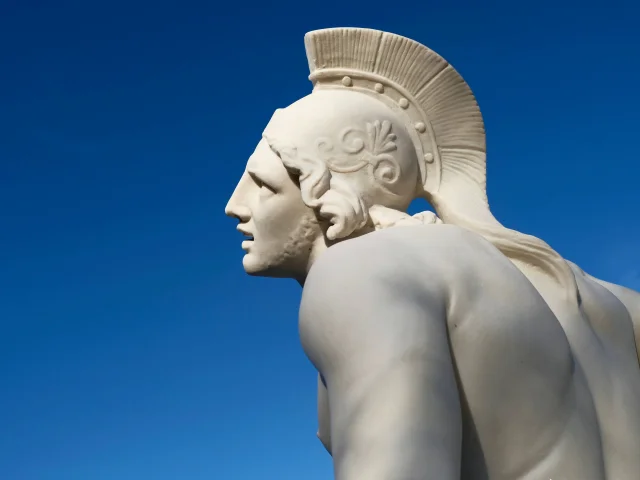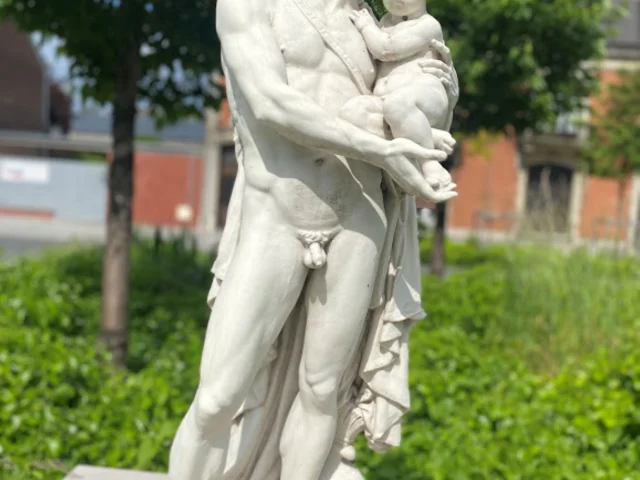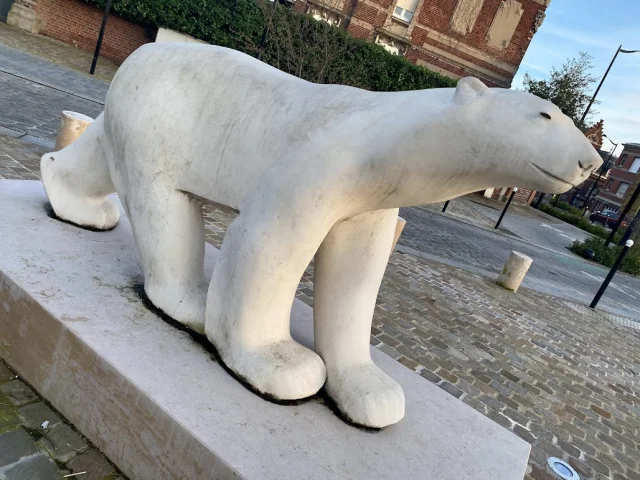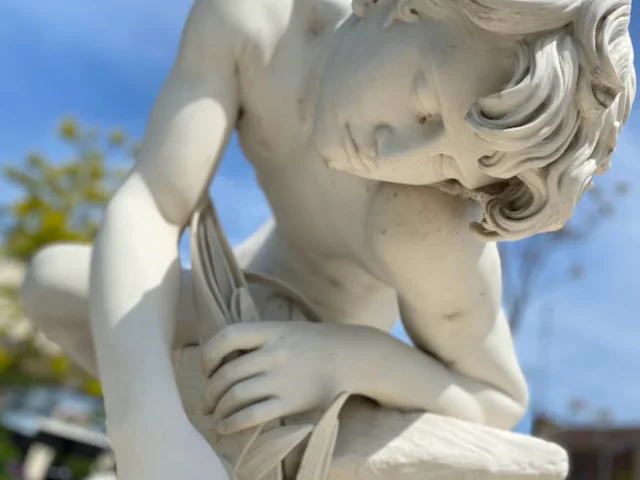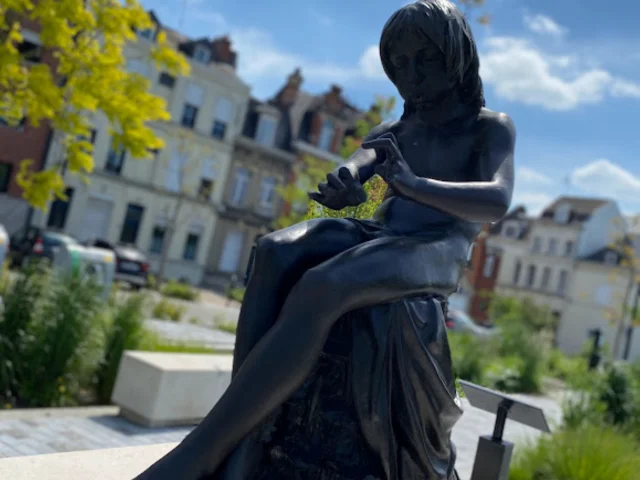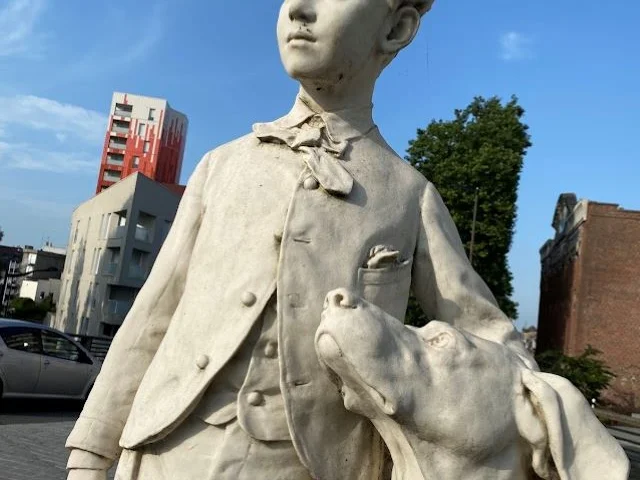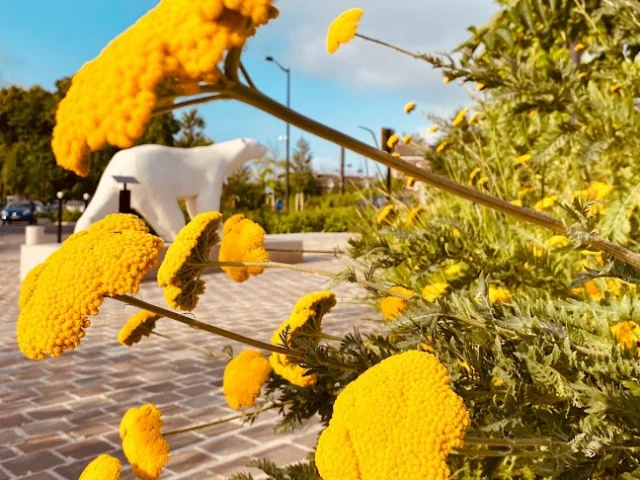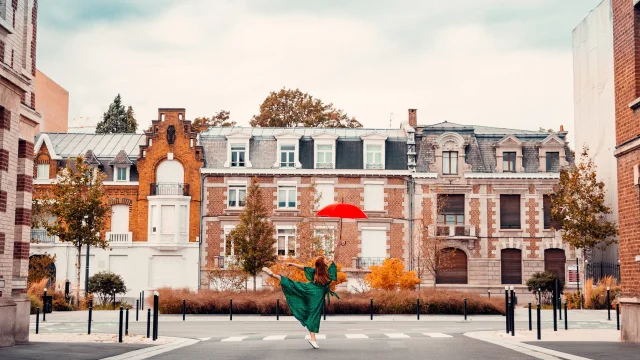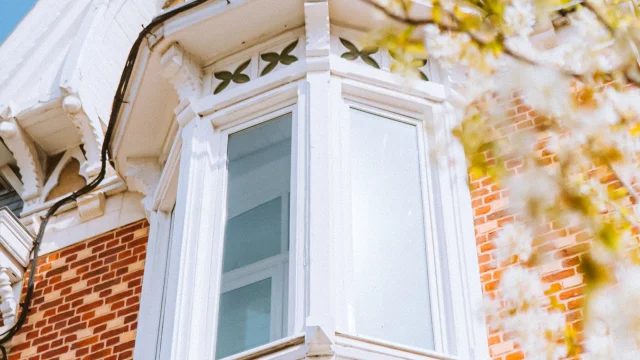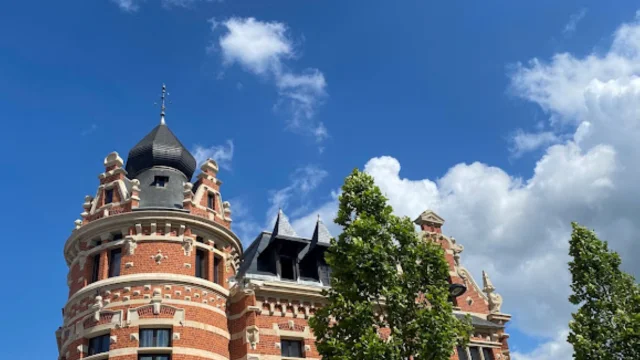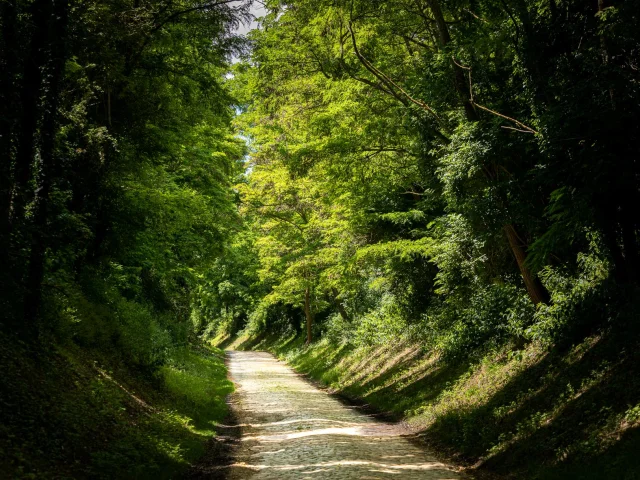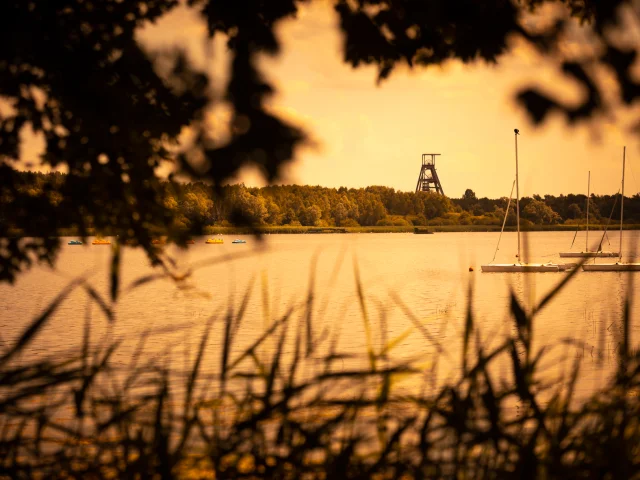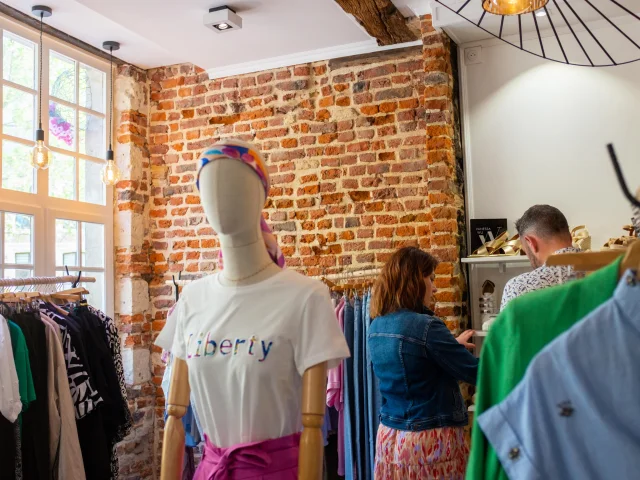Walking into the pastOn the trail of the fortified enclosure
The stronghold of Valenciennes was dismantled between 1889 and 1893. Boulevards and middle-class neighborhoods replaced the ramparts and citadel. On boulevard Carpeaux, you can admire the only remnant of a medieval tower, the Tour de Dodenne.
Further along, boulevard Beauneveu runs alongside the Place de l’Esplanade, where Valenciennois used to enter the citadel. Remains of the fortifications can still be seen in the park known as “de la citadelle”. You can also admire the Repenties lock, an 18th-century lock listed as a historic monument.
Without going quite that far, desks set up along boulevard Beauneveu display some old maps and provide some historical information on the vanished fortified enclosure.
